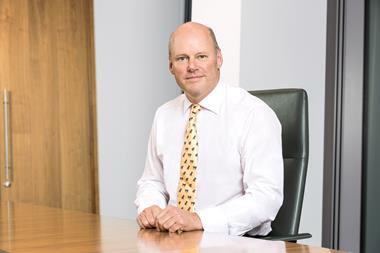The insurer’s chief executive confirmed that these regions have returned to profit at the end of 2019
Scott Egan, chief executive, UK and international at RSA Insurance Group has confirmed that the insurer’s UK and European businesses need to “continue to pull more of their weight” this year as both regions return to profitability at the end of 2019.
Speaking exclusively to Insurance Times this morning, Egan announced that the UK reported a 97.7% combined ratio, while Europe recorded a 92.6% combined ratio; he described this as “good progress”.
He said: “Our ambition is to improve the quality of earnings at a UK and international level, which in short really means that UK and Europe need to continue to pull more of their weight and that’s what we’re going to try and do.”
Financial round-up
Giving his highlights of RSA’s 2019 full-year results, published today, Egan was pleased with a 95% combined ratio for the insurer’s UK and international arm. Its Ireland and Middle East businesses, on the other hand, both achieved below 90% combined ratios for the second year running.
He added: “The execution capability is improving in particularly the UK and European businesses, but our attritional loss ratios have improved, our large losses are much more normal, although we’d like another year of that, and I think we’re working with a greater intensity and pace; those are good lead indicators.”
RSA is also spotting “early signs of growth” within some of its portfolios for 2020. This includes home insurance products within RSA’s subsidiary More Than – although customer and financial growth here is small, this puts a halt to a three-year decline, which Egan views as vastly positive.
In addition, Egan said that RSA’s regional commercial broker business in the UK is also producing strong figures, with new business up by 35% and customer retention sitting around 80%.
Year ahead
Although Egan wants “more of the same” for 2020, RSA has a few key objectives for the new year.
“We want to see improvements in loss ratios and commercial lines, we want to carry rate in the marketplace, particularly in commercial and I’m going to push on portfolios where we know we can do a better job, so that’s what we’re going to aim for in 2020,” he said.
“Our longer-term aim is to get the UK and international combined ratio below 94% and more importantly to deliver that consistently, which has always been its Achilles heel, but I’m clear we need to prove every single year that that’s a credible ambition and that’s what we’re working incredibly hard to achieve.
Our intention is always to at least price for claims inflation; if you don’t, you go backwards
Scott Egan
“We need to keep the momentum going that we’ve built over 2019. I think we’ve built great momentum in our underwriting space. I think we’ve made good momentum with some of our customer interactions, we’ve seen our customer service metrics improve in 2019.
”They need to improve again in 2020 and so, we need to continue the areas of growth that we saw in 2019, but not be seduced into doing growth for growth’s sake. It’s about really keeping that momentum going.”
Broker relationships
Thanking the broker community for its continued partnership is important to Egan; during a conversation with Insurance Times, he even went as far as to reassure brokers that RSA will not “rest on our laurels” in 2020.
He said: “Our broker community was an incredibly important part of RSA they’ve been very supportive of us during 2018. I think we’ve seen an improved and changed RSA in 2019.
“I’d like to publicly say thank you to them for their support and be really clear, we’re not resting on our laurels. Our ambitions in 2020 are to do an even better job for them and, more importantly, for their end customers.”
Claims inflation
Egan further confirmed that RSA needs “to be alive to claims inflation”.
He continued: “Claims inflation comes in many forms across every product that we sell. Our intention is always to at least price for claims inflation; if you don’t, you go backwards. And I think we can do that through a variety of techniques. In the end, we need to make sure our prices reflect the net rate of inflation on our products.”
These techniques, according to Egan, include increasing rates, improving risk sophistication and making claims processes more efficient and effective through measures such as fraud reduction.
“But claims inflation, I’m afraid, is part of society,” Egan added.
However, Egan did describe the government’s whiplash reforms as a “more interventionist approach” to tackle claims inflation. He explained: “[It is] good for customers where we seek to eradicate what I would term costs that don’t add much value to the customer, [for example] extortionate legal costs.”














































No comments yet